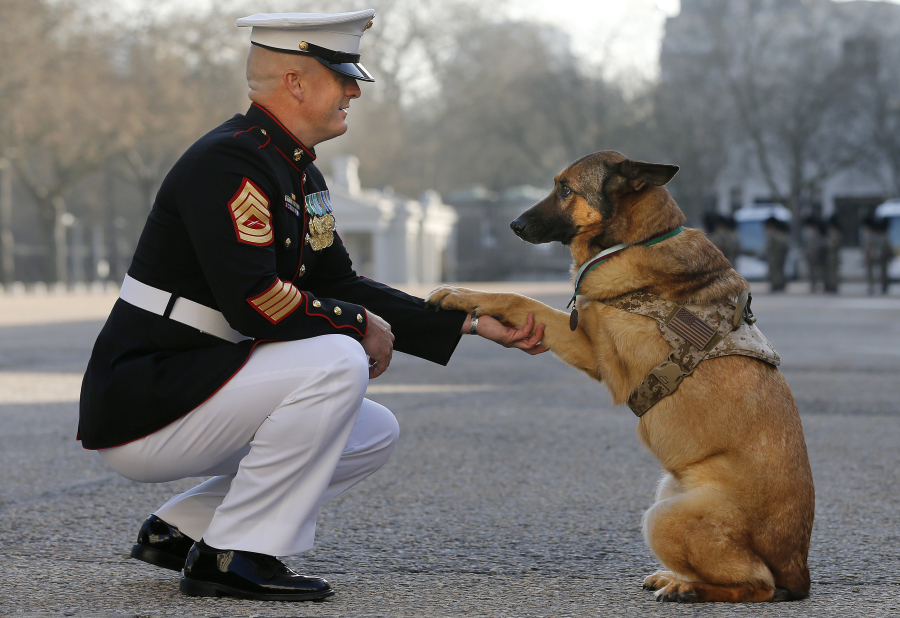War is hell for almost everyone who gets near it. This includes animals — especially the hundreds of dogs the U.S. military has sent to serve alongside soldiers in Afghanistan, Iraq, and elsewhere since Sept. 11. Now, the Pentagon is taking steps to make sure more of them come home.
The armed services have had dogs since about day one. At the moment, roughly 1,600 Military War Dogs are either in the field or helping recuperating veterans. That’s approximately one dog for every three U.S. soldiers currently in Afghanistan.
These animals are, however, an increasingly precious resource. With terrorists targeting public transportation and tourist sites all over the world, global demand for bomb-sniffing dogs has surged. Canines with finely trained noses now fetch $25,000 and up on the open market, where border patrol units, the State Department, and private security firms go for canine talent. Even the war on bedbugs scoops up some of the best noses in the business. And that’s just U.S. demand.
So, out of necessity, the Department of Defense is buying up lifelike canine mannequins to better train medics that care for furry soldiers when they fall. Since these dog dolls hit the market in January, the Pentagon has purchased about 80 of them from TraumaFX, an Atlanta-based unit of defense contractor KForce Government Solutions Inc. The company, which employs Hollywood movie designers, is bidding on an additional six proposals at the moment.



